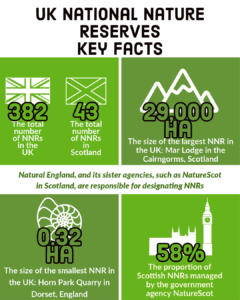Since I wrote my last blog post, I have attended workshops that are part of the Geosciences Outreach and Engagement course about active learning, and using Linkedin Learning and Adobe Spark. Outside of the course, I have also participated in a webinar organised by National Museums of Scotland. This explored how the museum’s collections are being used to communicate the threats of climate change, and how art can be used to inspire action. I found both the workshops and webinar hugely influential in developing ideas for my project, and will explain how below.
Active Learning workshop
Throughout the workshop on Active Learning, I was making connections with activities I remember from my own learning at school, and I realised that these were created with the intention of inspiring active learning. I recognised the basic format/layout of many of the activities that Steve gave as examples, such as the odd one out activity – familiar from many of my own lessons at school, such as Spanish and geography. The fact that I could recall these activities reinforced to me the impact that active learning can have. Thinking back to these activities, and being able to consider them from a student’s perspective, but also the educator’s perspective provided by Steve, enabled me to start to formulate ideas as to how I could incorporate active learning into my outreach project.
Following the workshop, I collated a list of potential ideas for active learning for my project e.g. at the start giving students an ‘entrance ticket’ type activity where they write down three words they associate with insects on a post-it note, and stick these to a whiteboard. I imagine some students will say things like ‘boring’, ‘annoying’ or ‘scary’. This would enable me to address learnt stereotypes and dispel misconceptions, whilst highlighting the students’ baseline knowledge. Anticipating negative emotions or reactions, I will then use a multiple choice quiz to engage and inform the students and highlight the importance, diversity and declining status of UK insects using surprising and interesting statistics, photos and facts. Students could be placed in pairs to discuss and share their answers before they are submitted.
National Museums of Scotland talk
On the 4th November, I attended an online talk run by the National Museums of Scotland. It included panellists such as the museum’s assistant curator of entomology, Ashleigh Whiffin, and the artist Luke Jerram who designed the Earth artwork installation which many people will recognise from backdrops of news broadcasts and interviews from COP26 in Glasgow. Through this webinar, I hoped to gain insight into how insects can be used as mechanisms to communicate broad topics such as climate change, and get inspiration as to potential ways I could do this in my project. Ashleigh’s introduction to the National Museums’ entomology collection provided me with ideas as to how I can communicate the importance of insects to my audience. Ashleigh put key statistics into context, such as the number of insects in the world, by relating this to how many insects there are per human on the planet (1.4 billion insects for every human)! To convey the importance of insects, Ashleigh also described the services they provide to humans, such as pollination, and waste recycling. I think this will be an effective angle for me to take to engage students’ interest in insects.
The artist on the webinar’s panel also made me think about how I can engage students. They talked about how art can be used to invoke emotional uplift, and inspire people to take action on issues such as climate change. Photography was mentioned as a useful tool to do this, especially with insects, as macrophotography in particular can give you an insect’s eye view of the world. With this in mind, I have come up with an idea of playing a Who’s Who type game, using eye-catching photos of insects found in the UK. Students could be given bingo type cards containing information about different insects, such as their diet, favoured habitat, and conservation status. They could then work in pairs to place cards featuring photos of different insects on the correct piece of information for that particular insect. We would then go through the correct answers together. Not only would this use a technique recommended in the webinar to engage people with insects, but it would also be a form of kinaesthetic and active learning. By moving cards around, and deciding where to place them, students would draw on their existing knowledge and learn from the ones they got wrong. Furthermore, I could use the skills taught in the workshop on Adobe Spark to create eye-catching information and photo cards to be used in the activity.
Adobe Spark
I had not previously used Adobe Spark before the workshop on Thursday, however, after experimenting with it in my own time, I am impressed by the quality of graphics that you can produce with it, even with limited graphic design experience, like me! Inspired by this, I have already used the programme to produce an information graphic for an assignment for one of my other university courses. I have previously used Microsoft PowerPoint or Canva to create diagrams or graphics, but find Adobe Spark more user friendly. The ability to access premium features through my university account is a huge advantage.

A graphic I have made for one of my other university courses, using the skills I learnt in the workshop on Adobe Spark
Conclusions
Overall, the workshops and webinar that I have attended have greatly aided my process of idea development. They have helped me think more creatively about the activities and resources that I can implement in my project. Having found such thought processes so beneficial, I would like to take these forward with me as I develop my project further.
